This is a free fortnightly newsletter about the New Zealand Net.
If you would like to be notified by email when a new edition is published, please subscribe here.
Browse our Newsletter Archive and List of Net Tips.
Featured key
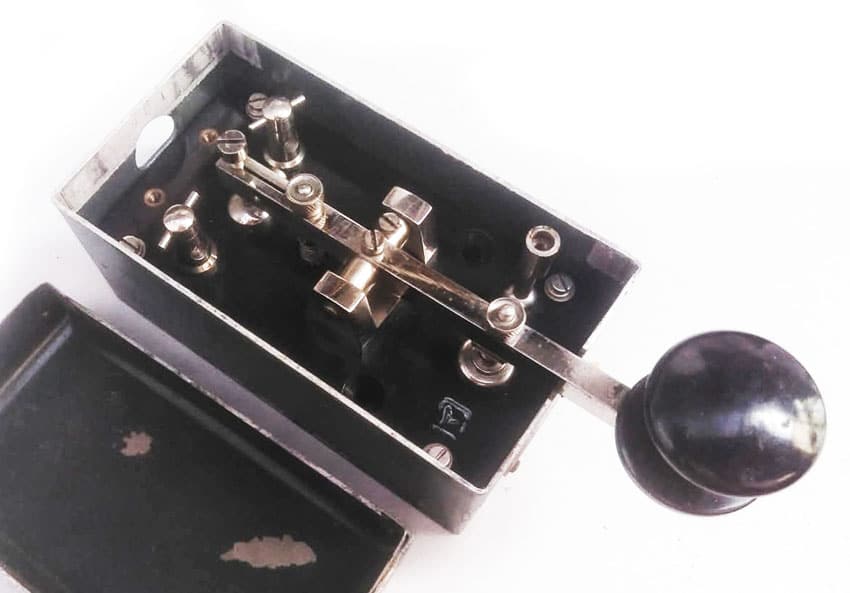
By Lester ZL4PO
I purchased this Japanese key from a deceased estate in Kapiti last year. It appears to be nickel-plated brass, and l am impressed by its solid construction and very nice ‘feel’. There is a two-way toggle switch on the front right-hand side of the box with “Front Seat” and “Rear Seat” written in Japanese above and below the switch respectively.
A nomenclature plate located on the front-centre of the box below the key has two anchor symbols impressed onto it and reads “No. 304 The Japan Wireless Communication Telephone Company” in English and Japanese.
Under the key is an RF choke and paper capacitor spark quench circuit to minimise key clicks from keying the cathode of the transmitter, though l suspect the roar of aircraft engines would be detected before any key clicks were picked up!
In summary, this key belonged to an aircraft of the Imperial Japanese Navy. It is most likely to have come from either a two or three-seater aircraft such as the Aichi D3A, codenamed “Val”, and was probably “souvenired” by an Australian sailor c1945 during the evacuation of Allied prisoners of war and civilian internees in the Pacific, possibly in the Halmahera Islands/Borneo area.
Does anyone else know anything about this key?
* If you have an interesting key for this feature, please send a nice clear photo and a few words describing it. We currently have quite a few interesting keys in the queue, so please be patient if your key isn’t featured right away.
Quick notes
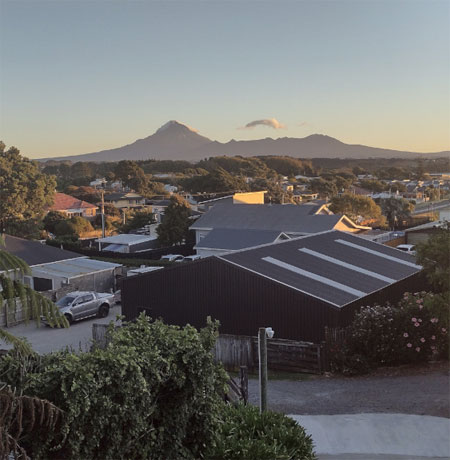 Graeme ZL2TE is off the air for a few weeks while moving and settling into his new house. Pictured is the view of Taranaki Maunga from what will become the new shack. Nice!
Graeme ZL2TE is off the air for a few weeks while moving and settling into his new house. Pictured is the view of Taranaki Maunga from what will become the new shack. Nice!
The first trans-Tasman amateur radio contact occurred 102 years ago, on 26 April 1923. The operators were two legends of radio: Frank Bell 4AA at Shag Valley, Otago and Charles Maclurcan 2SM in Sydney.
Three well-known radio amateurs have recently become Silent Keys:
- Jean Moffett VE3WAD (aged 101) is someone I was privileged to know as a fellow member of the Ontario Science Centre ARC in Toronto many years ago. Jean was a long-time volunteer at VE3OSC and a great ambassador for amateur radio.
TV reporter visits VE3OSC for Jean’s 100th birthday - Wayne Overbeck N6NB (aged 82) was a former ARRL Vice Director and Contest Advisory Committee Chairman.
- Paul “Tad” Cook K7RA wrote the weekly W1AW Propagation Forecast Bulletin and the K7RA Solar Update for the ARRL Letter.
Photo flashback

Photo: Robert Percy Moore, Alexander Turnbull Library
Apia Radio in Samoa c1920s. A couple of interesting things about the mast. Unlike the similar Telefunken stations in New Zealand which had two sets of guys on the mast, Apia Radio had three sets. Maybe they were being extra careful due to cyclones? Also the guy anchors (you can see two in the photo) do not seem to have adjoining structures to accommodate the tensioning winches. Perhaps they were dug into excavations?
Morse on display at Steel N Wheels
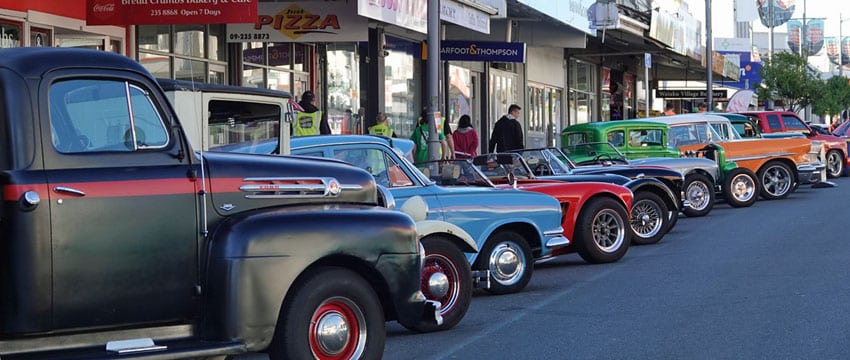
Photo: Waiuku Business and Development Association
By Peter ZL1PX
 Steel N Wheels Festival comes to Waiuku just before Easter each year. This year, Franklin Radio Club offered Send Your Name in Morse at the event. Our goal was to give visitors a memory of a ham radio activity.
Steel N Wheels Festival comes to Waiuku just before Easter each year. This year, Franklin Radio Club offered Send Your Name in Morse at the event. Our goal was to give visitors a memory of a ham radio activity.
To make that happen, we used two rigs on 144.200 MHz CW, sending from the footpath on Kitchener Road and receiving at Waiuku Museum.
As the stations were less than 200 metres apart, reception was excellent. However, we weren’t the only attractions at the event. Behind us, on the children’s playground, trick motor cyclists looped the loop – a dangerous, exciting and enormously loud spectacle. A few metres up Kitchener Road, gun club enthusiasts fired their guns – equally loud. Across the duckpond from us, a jet engine was started every 30 minutes and sprayed a loud jet of flame across the water (the ducks were not impressed).
With all this excitement you might think CW wouldn’t stand a chance. However, in the intervals between these noisy attractions, queues formed at our stand as nearly 30 families brought their young ones to tap a Morse key.
 We gave each visitor a card with two blank spaces. He or she wrote their name in the top blank and filled out a Morse translation in the bottom. Once they saw their name in dots and dashes, they could practise on a sound generator.
We gave each visitor a card with two blank spaces. He or she wrote their name in the top blank and filled out a Morse translation in the bottom. Once they saw their name in dots and dashes, they could practise on a sound generator.
When that sounded good enough, we moved on to the real thing. We sent a simple QRV? to the receiving station and then prompted our visitor to send their name.
Before the event we thought about a fail-safe. What if the receiving operators, Steve ZLTZP and Steve ZL1SPR, could not copy the name? We circumvented this with 2-metre VHF handhelds on 146.500 MHz FM simplex. Each time a new visitor arrived, we simply called the receiving operators and told them the name they should expect to hear. In the circumstances, with noisy motor cycles, guns and jet turbines doing their thing around us, nobody noticed or minded. And after each visitor heard their name coming back, there were thumbs up and big smiles all around.
We achieved our CW contacts with straight keys on all-mode transceivers. The sending rig was an Icom IC-290H with a mag mount antenna on a car roof. Power was provided by the cigarette lighter connection. Our receiving rig was a Yaesu FT-818, powered by a 7Ah 12.8V Lithium battery, with a mobile UHF/VHF whip antenna on a mag mount sitting on the iron porch roof.
Mugshot
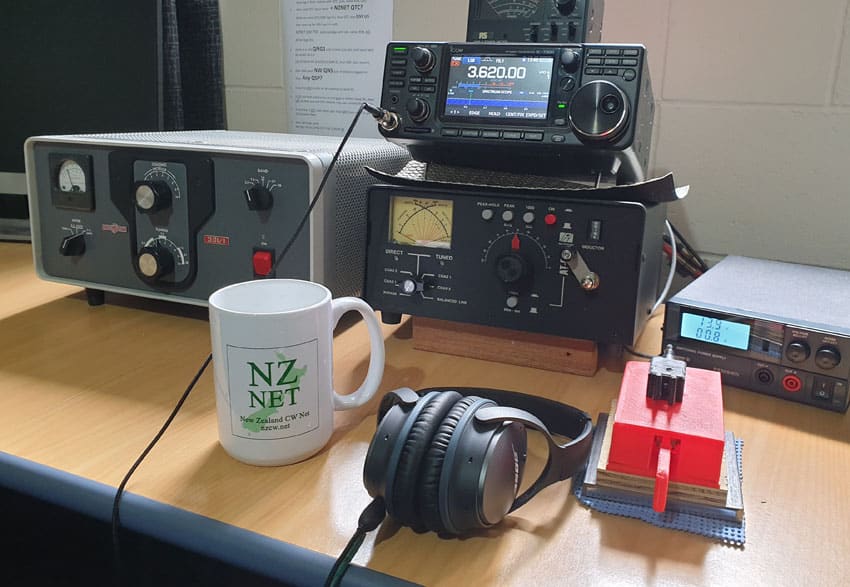
NZ Net mug, headphones and 3D-printed paddle ready for action at ZL4GW
Morse code acquisition as a potential neuroprotective intervention in aging
By Dr Jerry Smith KC3EID
17 Apr 2025 – Cognitive aging presents a growing public health challenge as populations worldwide experience unprecedented longevity. This paper proposes a novel theoretical framework positioning Morse code acquisition, specifically through the structured Long Island CW Club methodology, as a potential neuroprotective intervention against age-related cognitive decline. We analyze the neurocognitive mechanisms through which Morse training may confer benefits, including enhanced neuroplasticity, working memory engagement, attention network strengthening, bilateral hemispheric recruitment, and processing speed maintenance. These mechanisms target neural systems particularly vulnerable to aging processes, suggesting Morse code training may offer unique advantages over existing cognitive interventions.
» Continue reading this article or listen to the podcast
Video: Band change during a traffic net
In this 2016 video of the Hit & Bounce Net (founded in 1938) on 40 metres, Jim WB8SIW tells NCS he’d like to add QTC1 for Jeff WB8WKQ. Signals between these stations are not good, however, so they QSY to 80 metres to clear the traffic. Note that the radiogram is in ARRL format, which is a bit different to what we use on NZ Net.
Net tip: QNH and QNL
We continue our look at Q signals with two that you may hear used by the Net Control Station: QNH(x) and QNL(x).
They mean: “Your frequency is too high/low (by x Hz)”.
Getting on frequency (zero-beating the net control station) is a core skill of any CW net operator. It does not mean simply dialling the VFO to the advertised net frequency – because NCS may be on a somewhat different frequency for various reasons for a particular net session.
Unfortunately we continue to have stations that are off frequency, sometimes by more than 100 Hz. In such cases, they may not be heard by Net Control or other stations using narrow filters to reduce QRM or band noise.
It should be easy for any operator to get within 25 Hz of net frequency, and that will be good enough to be heard – even through narrow filters.
NCS operators want to help, so rather than simply advising a net station to QNZ (zero-beat my frequency), NCS will generally try to tell the other station how far off frequency they are and in which direction. Hence the QNH and QNL signals, such as “QNH 130”, meaning “you are 130 Hz too high.”
Tip: before calling into the net, check that your RIT is off, and that you are zero-beat with NCS. Some of the techniques for correct zero-beating have been covered in previous editions of NZ Net News, and should also be in your rig’s manual. If you’re not sure, please ask one of the net controllers for advice.
The A-Z of Q Signals
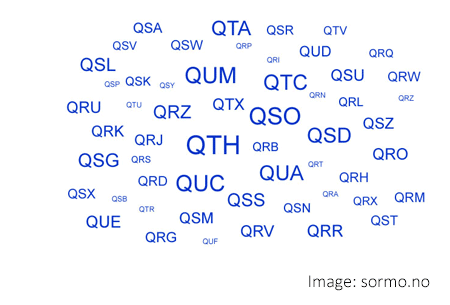
A well-run CW net is a lovely thing to experience. Communication between stations is quick and concise, and the net business is conducted with minimal time wasted.
As CW operators, we have many techniques to communicate quickly and efficiently. And if we know and use these techniques, we can often match or exceed the speed and accuracy of voice communication.
One of our most important tools is the set of Q Signals (or Q Codes), and in this series we look at the “essential” ones, in alphabetical order.
Advertising archive
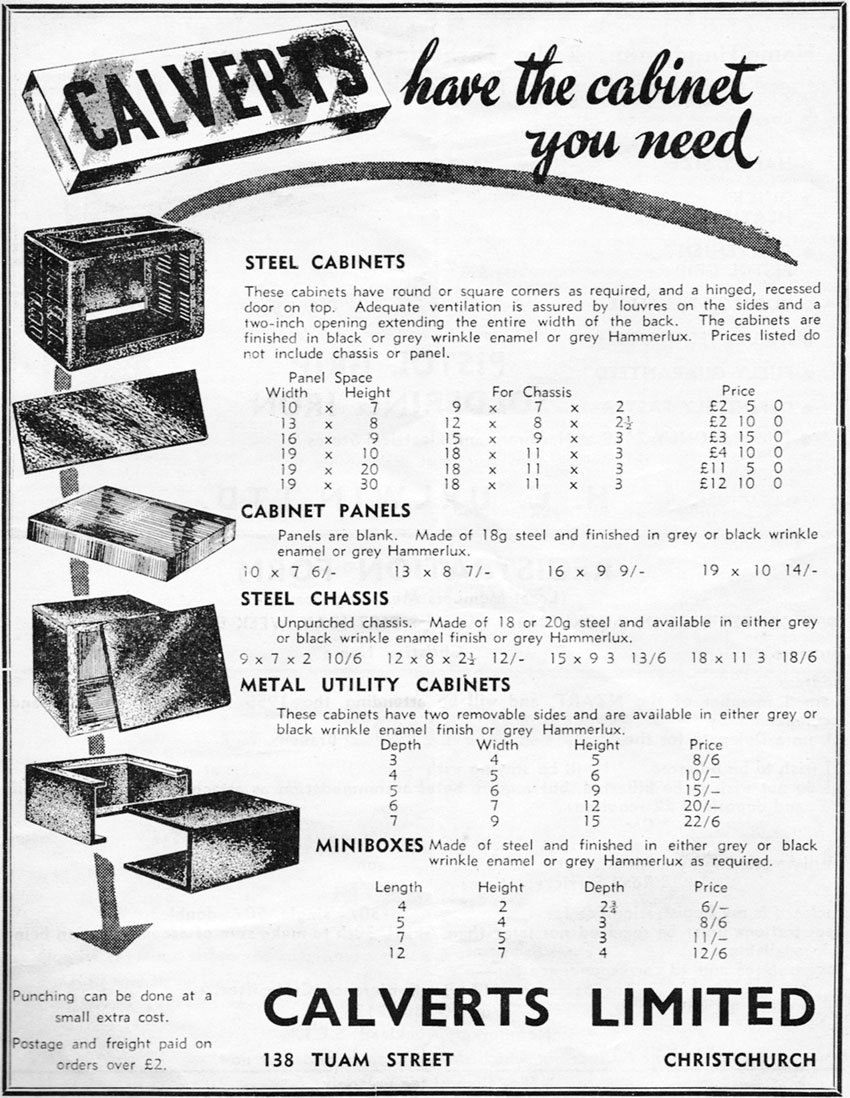
Break In magazine, Feb 1956
Suggestions?
If you have suggestions on how to make the NZ Net better, or things you’d like to see covered in these updates, please contact ZL1NZ. You might even like to write something for the newsletter.
Thanks for reading, and I hope to hear you soon on the NZ Net!
—
Neil Sanderson ZL1NZ, Net Manager
New Zealand Net (NZ NET)


